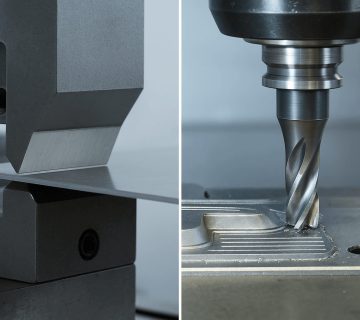In the semiconductor industry, precision tools are expected to operate under extreme conditions—whether it’s high-speed cutting, fine polishing, or repetitive micro-drilling. One common challenge is tool wear, which can lead to reduced accuracy, more frequent tool changes, and higher production costs.
This is where carbide tips, particularly those made from tungsten carbide, come into play. Known for their exceptional hardness and durability, these tips are widely used in tools designed for high-performance applications in semiconductor manufacturing.
The Role of Carbide Tips in Precision Tools
Carbide-tipped tools are commonly used in various stages of semiconductor production, including wafer slicing, component shaping, and mold fabrication. These tips are typically made from a dense material composed of tungsten and carbon, bonded together with cobalt or other metals to create a hard and resilient cutting edge.
In high-precision environments, the goal is simple: maintain sharpness and structural integrity for as long as possible. Carbide inserts and tooling components are valued because they help maintain consistent performance under conditions where other materials may fail.
Why Carbide Materials Are a Preferred Choice
Tungsten carbide is one of the hardest materials used in toolmaking—ranking near the top of the Mohs scale. Its ability to resist abrasion, retain shape, and withstand high operating temperatures makes it ideal for tasks where both accuracy and durability are critical.
Some notable properties include:
- Extreme hardness and wear resistance
- Resistance to heat and deformation
- Excellent mechanical strength under pressure
- Consistency in dimensional stability
Thanks to these attributes, carbide-tipped tools can often go significantly longer between maintenance or replacement cycles—an important advantage in precision-driven industries like semiconductors.
What Causes Tool Wear?
Before we dive into how carbide tips combat wear, it helps to understand what causes wear in the first place. Even the best-designed tools are vulnerable to gradual degradation over time due to several key factors:
1. Abrasive Wear
Occurs when hard particles or surfaces grind against the tool, removing material from its surface.
2. Thermal Fatigue
High-speed operations generate heat. If the tool material cannot manage thermal loads effectively, it may soften or crack.
3. Mechanical Stress
Repeated cutting or grinding can lead to micro-cracks or structural fatigue over time.
4. Chemical Interaction
Exposure to certain coolants or reactive materials may result in corrosion or chemical wear.
Each of these forms of wear can reduce tool effectiveness, impact accuracy, or lead to complete failure if not properly managed.
How Carbide Tips Help Combat Wear
One of the main reasons carbide materials are preferred in semiconductor tooling is their ability to resist wear under harsh operating conditions.
Whether it’s cutting through hard materials or performing repetitive micro-machining tasks, carbide tips offer a combination of strength, stability, and durability that helps maintain tool performance over time.
Durability Against Abrasion
The dense microstructure of carbide allows it to withstand repeated contact with abrasive surfaces. This is especially important in semiconductor applications, where tools often work with hard materials like silicon wafers, ceramics, or composite substrates. By resisting surface wear, carbide tips help maintain their geometry and cutting edge over a longer period.
Heat Tolerance
During high-speed cutting or grinding operations, significant heat is generated. Carbide materials have excellent thermal stability, which means they retain their hardness and structural integrity even at elevated temperatures. This reduces the risk of warping or softening, helping tools maintain accuracy and efficiency during continuous use.
Longer Edge Life
Because of their hardness and resistance to mechanical degradation, carbide tips can maintain a sharp edge far longer than many alternative materials. This extended edge life results in fewer tool replacements, minimized downtime, and more consistent performance—especially important in processes where tight tolerances are non-negotiable.
Material Adaptability
Carbide isn’t a one-size-fits-all solution. Manufacturers can fine-tune the properties of carbide—such as grain size, binder content, and composition—to achieve the right balance of hardness and toughness for a specific task.
This versatility allows engineers to select or customize carbide tips for a wide range of semiconductor applications, from delicate micro-features to high-volume production tooling.
The Importance of Choosing the Right Supplier
Selecting the right supplier for carbide-tipped tools is critical to ensuring long-term performance and precision. Not all carbide tools are created equal—differences in material quality, sintering methods, and manufacturing tolerances can significantly impact tool life and reliability.
In high-precision industries like semiconductors, even minor inconsistencies can lead to process inefficiencies or defects. A trusted supplier should offer material traceability, application-specific customization, and technical support to help optimize tool selection.
By working with a partner who understands the demands of semiconductor tooling, businesses can achieve better consistency, reduce downtime, and maintain high standards across their production lines.
Final Thoughts
In semiconductor manufacturing, every micron counts—and tool wear can quickly become a limiting factor. Using carbide tips offers a proven way to extend tool life, reduce production interruptions, and maintain precision in demanding environments.
By understanding the nature of tool wear and selecting the right materials and practices, businesses can make smarter tooling decisions that pay off in the long run.
Whether you’re upgrading an existing line or specifying components for a new process, carbide-tipped solutions remain a strong and reliable choice for critical operations.


